
Neuromarketing is a branch of marketing that integrates consumer phycological principles with marketing best practices.
I’ve talked a lot before about consumer psychology, both on my blog and elsewhere.
That’s because the brain plays such a vital role in selling (and buying).
For example, the color of your CTA button or the pictures on your landing pages can impact conversions.
The brain is designed to process information in specific ways, and it will react accordingly to certain triggers.
If you can optimize your site to include those triggers, you can boost your sales.
It’s not always as simple as using certain colors. Psychology, like people, is complicated.
Despite the complexity of psychology, there are a few brain-based strategies you can use that will get results.
How Psychology Impacts Sales Through Neuromarketing
Based on studies of the brain, we know that beauty literally moves us to action.
The site of something attractive — even a beautifully packaged product — triggers the part of our brain that governs hand movements.
We see something we like, and we want to touch it.
While we can’t literally reach out and grab products from our screens, there are ways retailers use this principle to drive sales.
Web design, for instance, can impact how favorably someone views your brand or product.
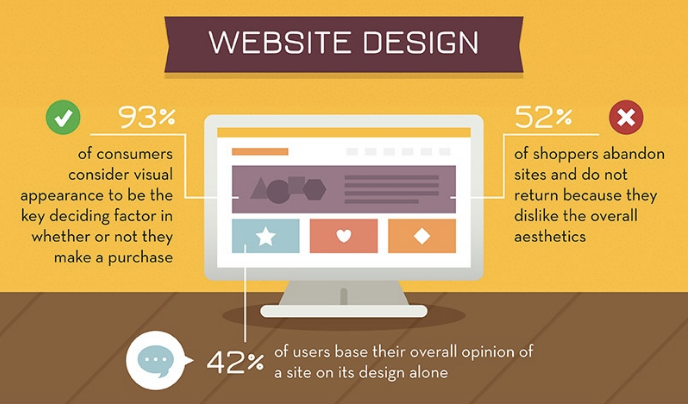
Psychology also tells us that people don’t like making tough decisions.
In one experiment, researchers gave buyers a choice between purchasing a pack of gum or not buying anything.
When they were given a choice between two packs that were priced the same (63 cents each), only 46 percent chose to spend their money.
When the packs were priced differently (62 cents and 64 cents, respectively), 77 percent chose to buy a pack.
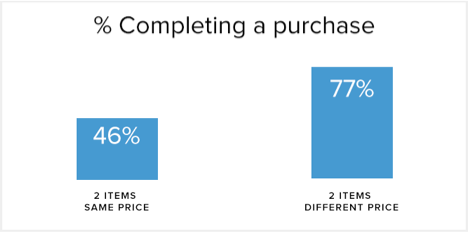
In psychology, this experiment is related to “analysis paralysis,” or the idea that making no choice is better than making a tough choice.
If you make it easy to choose between your products, people will be more likely to buy them.
Makes sense, right?
There are probably innumerable ways you can use psychology to set up your website or improve your marketing.
But some tactics still work better than others. Here are a few of the ones I recommend the most.
1. Structure Content Using Neuromarketing Principles
While consumer psychology has been around a long time, neuromarketing is a relatively new field.
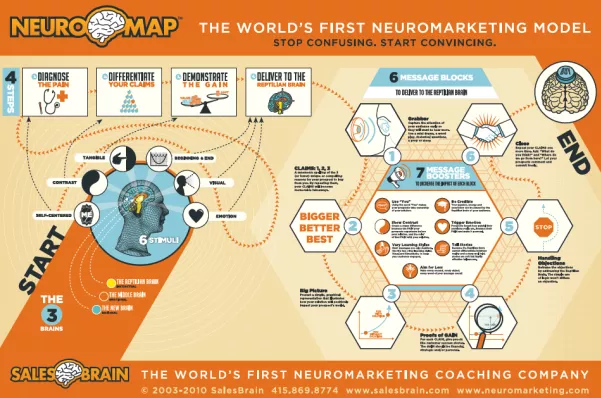
Neuromarketing utilizes technology to track the brain’s blood flow as people respond to audio and visual cues.
This allows researchers to examine the deep part of the brain known as the “pleasure center.”
Don’t worry. You don’t have to invest in expensive equipment to take advantage of neuromarketing. You can use the research that’s already out there.
We know that our brain is divided into three unique “sub-brains.”
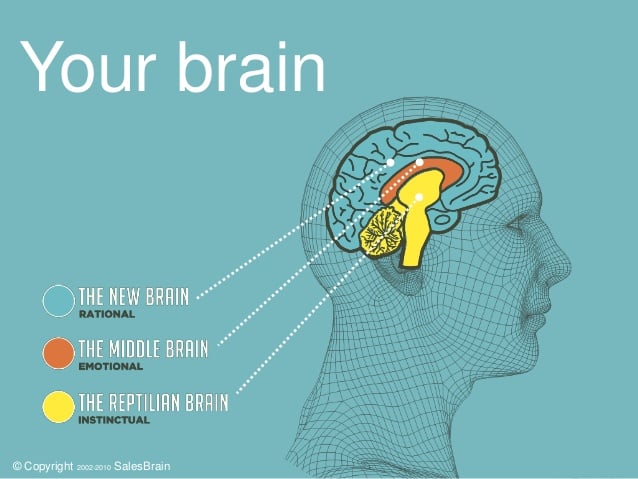
- The new brain: Also known as the rational brain includes the neocortex (the outermost layer of the brain) which is responsible for processing facts, language logic, and other skills.
- The middle brain: Also called the emotional brain includes structures like the olfactory bulbs (smell), hippocampus, and amygdala, which govern emotions and memory.
- The reptilian brain: Also called the instinctual brain is made up of the brainstem and cerebellum, responsible for motor balance, safety, avoidance, and survival instincts.
Each part of the brain releases different chemicals depending on certain triggers.
The middle brain, for example, releases endorphins when a person sees something beautiful.
If someone is worried, the instinctual, reptilian brain may kick in the fight-or-flight response.
They each have their own job in ensuring you survive and operate properly.
But what does this mean in terms of your marketing strategy?
Take a look at how this might play out in the structure of a blog post, for example:
- Initial image or design elements: The brain processes the overall design of the landing page and determines attractiveness (dopamine is released). This is the middle brain engaged.
- Intro or headline: A teased topic creates an anticipatory rush and gets the reptilian brain involved (dopamine and adrenaline are released).
- Problem or concern: A negative headline or introduction triggers fear and again the reptilian brain takes over (cortisol, the stress hormone, is released).
- Solutions to the problem or concern: The content addresses the topic and provides a resolution that engages the new brain (endorphins and dopamine are released to reduce cortisol and adrenaline).
- Call to action to solve the problem: Serotonin and oxytocin are released.
So you could have a blog post that looks like this:
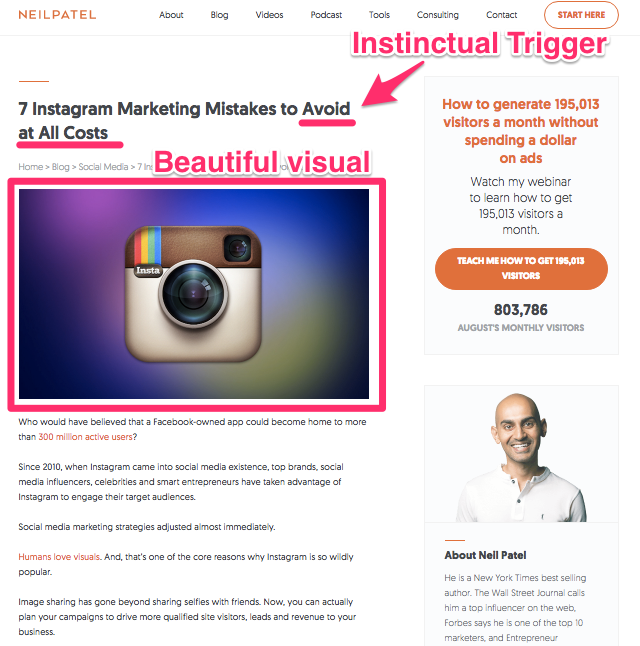
With a resolution that looks like this:
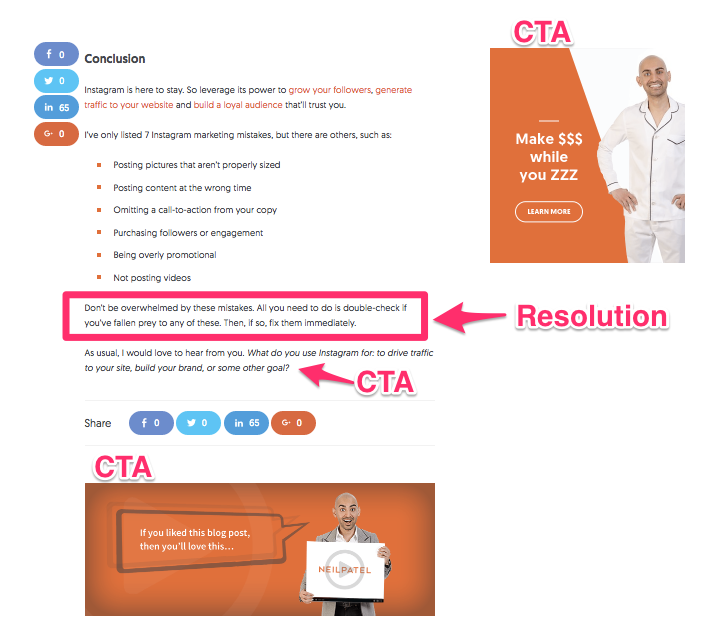
Each stage of the post is releasing certain chemicals in the brain of the person reading it.
Using a “scary” headline (like 7 Marketing Mistakes You’re Making Right Now) might trigger a different response versus a “happy” headline.

Or one that’s more solution oriented, like “How to Fix These 10 Common Marketing Mistakes.”
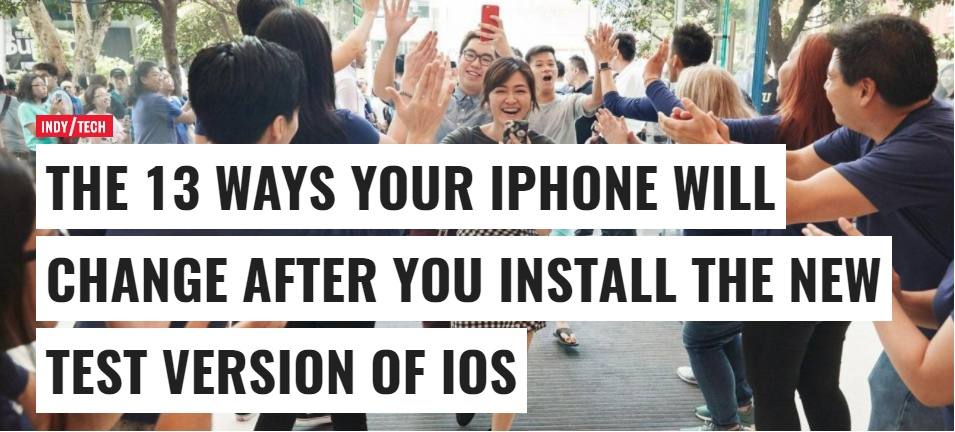
Each of these will trigger different emotions and different reactions in the brain.
This is neuromarketing.
You’re using the way the brain naturally responds to stimuli to create content that triggers those responses.
2. Promote Benefits to Relieve Fears
Neuromarketing isn’t just for headlines.
You can also use neuromarketing principles on your landing pages.
Take a look at the homepage for Ubersuggest, our keyword research tool:
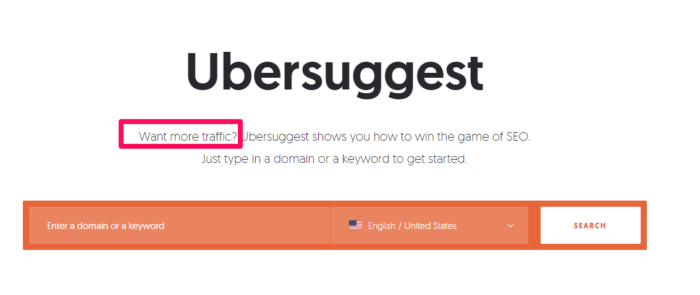
You’ll notice an immediate psychological trigger: “Want more traffic?”
I definitely have an emotional response to it.
Hey, why am I not getting more traffic? What am I doing wrong? How can I fix this?
It triggers a little bit of fear. I need answers.
Ubersuggets’ landing page immediately tells me what action I can take to resolve my fears.
I just have to enter a domain or keyword. OK. Easy enough.
If I want to know more about how this will help me, I can scroll down the page to learn more about the domain overview, Top SEO pages, and keyword suggestions.
This lists the exact benefits I’ll get if I use this tool.
It’s a resolution to my initial concerns.
The headline was a trigger. The subheader was my answer. The benefits on the page told me that I would be OK.
And everything was simple enough for me to process quickly.
Listing the benefits of your product or service or including a value proposition not only triggers chemical responses in the brain, it also plays on another psychological principle: selfishness.
When it comes to making a purchase, people ask, “What’s in it for me?”
That’s why you want to use what HubSpot calls solution selling — where the emphasis is on what the customer needs, not on what you need from the customer.
They use this tactic on their homepage, too.

They have a proposition that resolves an almost unasked question (don’t worry, you can grow like a company twice your size).
But they also alleviate other concerns that might be rolling around in the back of your instinctual brain, like “How much will this cost me?”
This works because it not only answers what’s in it for me, it also plays off my emotions.
We often use our primal instincts and emotions to make decisions before our rational brain kicks in.
Emotional triggers, like the one HubSpot uses, can have a positive impact on us when it comes to making purchasing decisions.
So if you want more sales, list the benefits and relieve the fears — preferably at the same time.
3. Build Trust Through Storytelling
Trust is another neuromarketing component to successful sales.
We typically buy from people we trust and dismiss those we don’t.
But trust is built over time. So how do you establish trust with a buyer you’ve never met or even seen before?
Psychology tells us that incorporating storytelling into your sales strategy can help build trust on a deeper level beyond selling them on the benefits alone.
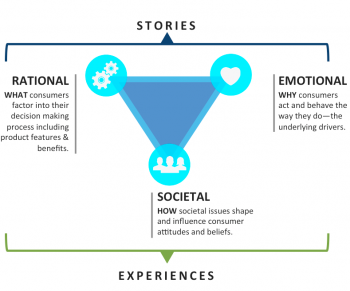
Stanford Business professor Jennifer Aaker says:
Our brains are not hard-wired to understand logic or retain facts for very long. Our brains are wired to understand and retain stories.
So how do you use storytelling for sales?
One of the best ways is to use social proof, like testimonials, to highlight customer problems and show, through personal stories, how you resolved those problems.
Easy, right?
Well, not so fast. There’s a catch.
As it turns out, not all reviews and testimonials are created equal. Some don’t work as well for sales as others do.
According to further research, the way you frame your social proof matters more than the social proof itself.
Action-based social proof — the testimonials that showcase how many customers bought your product — may not always be as effective as preference-based social proof.

Preference-based social proof focuses on why customers liked your brand, product, or service, not how they used it.
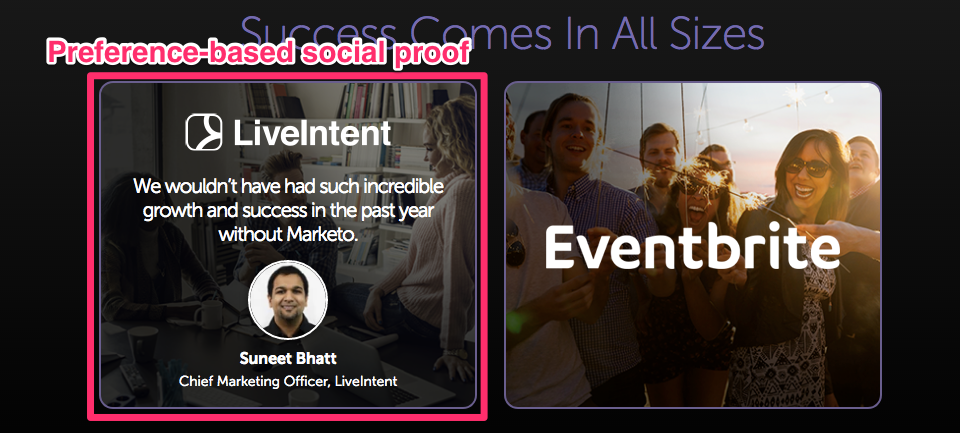
To be clear, both strategies work.
Depending on your audience and where the testimonials are placed (features page, homepage, etc.), one may be more effective than the other.
As Roger Dooley explains at Neuroscience Marketing:
When shopping, consumers are swayed more by what other people would like to have, rather than what they actually have.
So in many cases, using “warmer” testimonials (those that play on emotions and preferences) can be more effective than simply listing numbers or credentials.
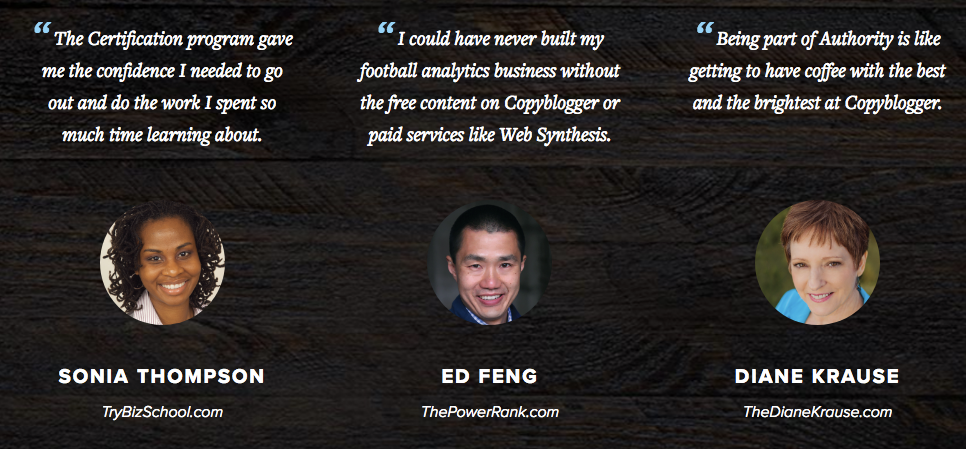
Focus on including social proof that tells a story of how you’ve benefited customers.
4. Make People Curious to Learn More
Humans are naturally inquisitive.
We love finding out how things work, and we want to know the full story before we buy in.
In psychological terms, this is called the curiosity gap.
This is why clickbait headlines work so well.
It begs a question that you want an answer to, even if you didn’t know you wanted to know it.
You can use it to spice up all aspects of your content marketing and landing pages.
Take this example of an article headline from Buzzfeed:

Normally, I don’t spend my day worrying about who wants to be the Prime Minister. But now I’ve been asked a question I need an answer to.
A lot of content marketing is set up this way, and some of it works really well to drive traffic.
What Buzzfeed does is smart, though, because if you read the article, they give you the answer right away.
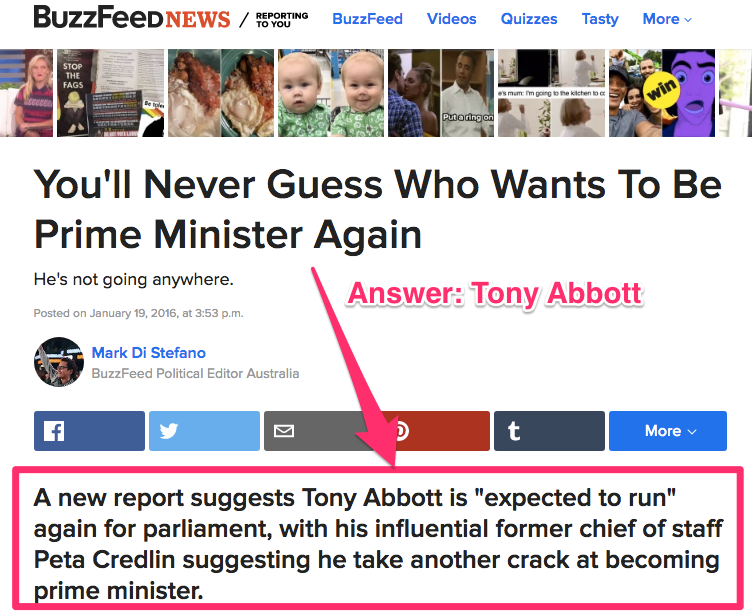
While the curiosity gap works for engagement, the caveat is that people don’t like being cheated.
If you make a promise of information, you need to deliver on that promise.
If the article from Buzzfeed never answered the question, or if it linked to unrelated content, I would be bummed. I would feel misled.
Here’s an example of the curiosity gap I use on my homepage:
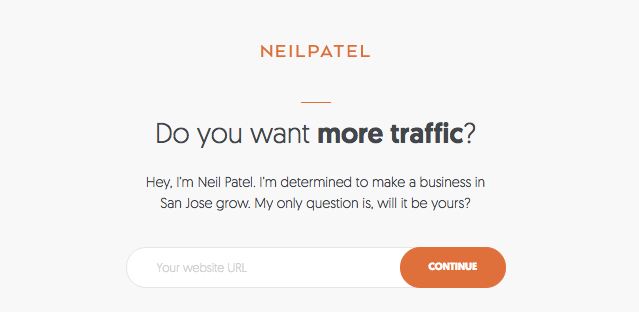
There’s no misdirect here. If you want to learn how to get more traffic, there’s an action step right there waiting to satiate your curiosity.
Using the curiosity gap is a great way to push someone through the sales funnel.
Just make sure you answer their questions without leading them on.
No one likes to feel cheated.
5. Keep Your Message Consistent
One way to boost sales is through customer retention.
You’ve heard the statistics. It costs five times more to gain a new customer than it does to retain one.
But that’s often not where businesses focus. Most are all about finding new customers.
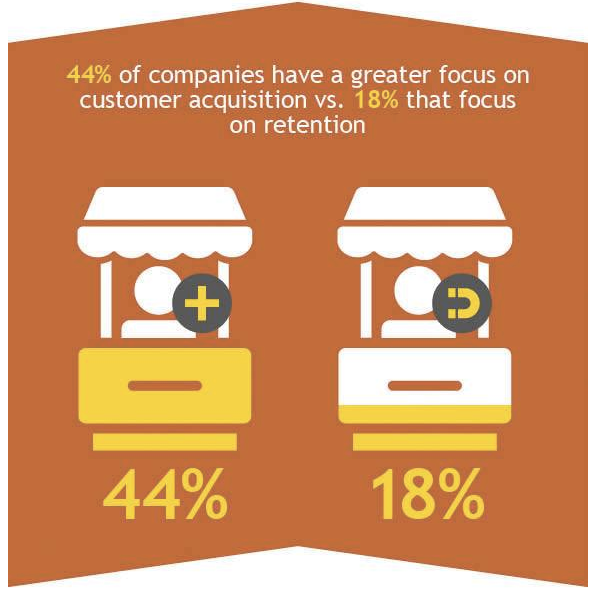
Let’s change that and focus on retaining customers.
There’s a lot that goes into customer retention, but one of the biggest reasons (psychologically speaking) customers stick around is because of a positive experience.
They see results from what you do. They love your products. They love your brand.
But one thing that humans don’t like is change.
We’re creatures of habit.
Brands often grow and change over time. That’s pretty normal. I’ve changed my message and branding over time, too.
But something that has always stayed consistent is my reputation.
I talk about marketing. My whole world is marketing.
If you came here tomorrow and I changed my colors from orange to green, you might be a little shocked, sure.

OK, maybe not so shocked.
The point is, you would still get the same marketing advice, even if I mixed up my colors.
Nothing about who I am as a brand is changing.
When it comes to creating a solid customer base, you have to keep some consistency.
While this doesn’t mean you can’t change it up once in a while, try to keep things as familiar as possible.
Choose a simple design that’s easy to navigate. Use two or three colors and a couple of fonts for your branding.
Once the overall look and feel of your site is part of your identity, your audience will easily recognize you when you pop up in other places around the web.
And this can be helpful when you’re retargeting or using PPC ads.
Take a look at this Facebook ad from Start.io:
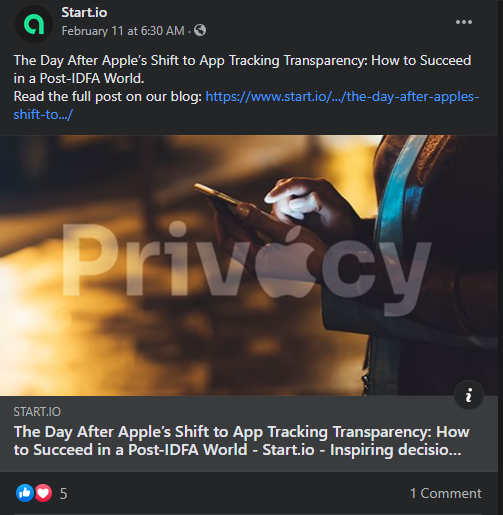
The color schemes, font, and overall tone match the landing page the ad links to.

It also matches the theme of their homepage.
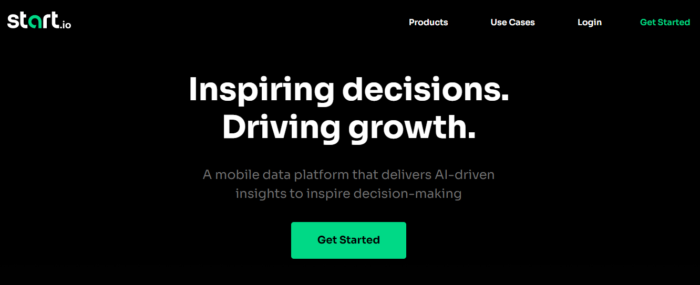
Even though they use different approaches to their marketing, you know that each of those components is from StartApp.
That’s the type of consistency you want to see across all channels.
When customers start recognizing your brand (and start to hear all the testimonies and other things you’re doing from this list), they’ll connect the dots.
Consistency is a great way to build relationships with people over the long haul.
Not only will you be driving a sale once, but you’ll also drive many sales over the life of that relationship.
Conclusion
Neuromarketing can be a helpful tool in understanding what drives people to buy.
It can tell you what your customers really want, why they make decisions, which emotions drive them, and how they see your brand.
One important thing to remember is that people are unique, and oftentimes unpredictable.
This is why it’s important to understand your audience before implementing these tactics.
What works for one brand, or one buyer, may not work for another.
But generally speaking, you can still tap into the basic principles of psychology to boost your sales and build relationships.
If you can convince the brain, you can convince the buyer.
What neuromarketing principles from this list have worked for you?
The post Intro to Neuromarketing: 5 Psychological Tactics to Boost Sales appeared first on Neil Patel.
from Blog – Neil Patel https://ift.tt/2jIA6Ei
via IFTTT
No comments:
Post a Comment